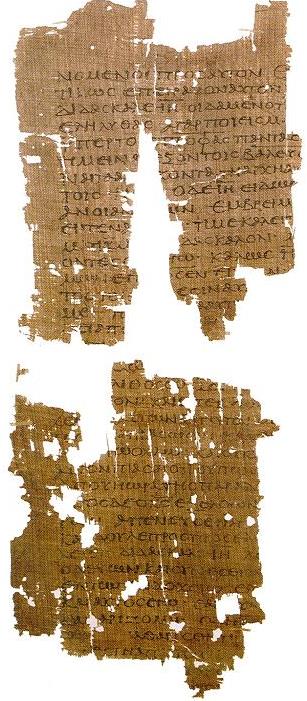The Egerton Gospel
Fragments of an Unknown Gospel, probably from Egypt, c. 150 CE, were discovered in 1934. The Gospel consists of two papyrus pages inscribed on both sides in ink in Greek with the text of four passages concerning Jesus.
Mitchell, T. C., The Bible in the British Museum, British Museum Press, London- 1988.
These fragments from a papyrus codex are parts of one of the two earliest surviving Christian books. Together with a small portion now in Cologne, they form all of what is currently known of the so-called Unknown Gospel. This text relates several of the same stories as the Four canonical Gospels in a similar historical manner. It is unmarked by the heretical doctrines and sensationalism typical of many non-canonical Christian writings, and appears to be a very early elaboration on the Gospel story. The text in the lower fragment corresponds with passages in chapters 8 and 10 in St John’s Gospel. On the reverse it relates the story of Christ’s healing of the leper in words that diverge significantly from the accounts found in the Gospels of Sts Matthew, Mark and Luke, and includes a mysterious passage that is without parallel in the canonical Gospels.
John Reeve (ed.). Sacred. British Library. 2007.
